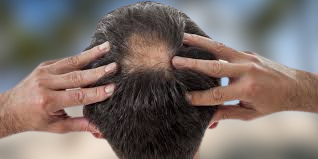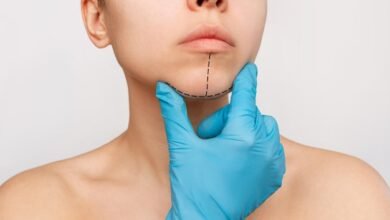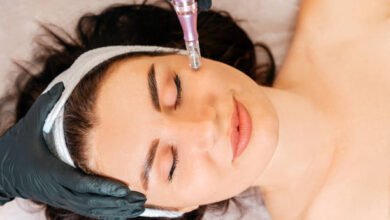
Hair loss, medically known as alopecia, is a common concern for both men and women. While it’s often associated with aging, various factors can contribute to hair loss at any age. In this comprehensive guide, we delve into the causes, symptoms, and treatment options for hair loss to help you understand this condition better.
Types of Hair Loss
1. Androgenetic Alopecia
Androgenetic alopecia, also known as male-pattern or female-pattern baldness, is the most common type of hair loss. It’s characterized by a gradual thinning of hair on the scalp, often starting at the temples or crown.
2. Telogen Effluvium
Telogen effluvium occurs when there’s a significant stressor to the body, causing more hairs than usual to enter the resting phase (telogen) and fall out. This type of hair loss is often temporary and can be triggered by factors such as illness, surgery, or extreme stress.
3. Alopecia Areata
Alopecia areata is an autoimmune condition that causes patchy hair loss on the scalp and other areas of the body. It occurs when the immune system mistakenly attacks hair follicles, leading to hair loss.
Causes of Hair Loss
1. Genetic Predisposition
Genetics plays a significant role in hair loss, particularly in androgenetic alopecia. Individuals with a family history of hair loss are more likely to experience it themselves.
2. Hormonal Changes
Hormonal imbalances, such as those experienced during pregnancy, childbirth, or menopause, can contribute to hair loss. Additionally, conditions like polycystic ovary syndrome (PCOS) can cause hormonal fluctuations leading to hair thinning.
3. Medical Conditions
Certain medical conditions, including thyroid disorders, autoimmune diseases, and scalp infections, can contribute to hair loss. Treating the underlying condition is crucial in addressing hair loss in these cases.
Symptoms of Hair Loss
1. Gradual Thinning of Hair
One of the most common symptoms of hair loss is a gradual thinning of hair, particularly on the scalp. This may be more noticeable in men with male-pattern baldness.
2. Receding Hairline
In male-pattern baldness, the hairline typically recedes from the temples, forming an “M” shape. Women with this condition may also experience a widening part or thinning at the crown of the head.
3. Patchy Hair Loss
Alopecia areata often presents as patchy hair loss, with smooth, round bald patches appearing on the scalp or other areas of the body.
Treatment Options for Hair Loss
1. Medications
Medications such as minoxidil and finasteride ( Propecia) are commonly used to treat androgenetic alopecia. These medications can help slow down hair loss and promote hair regrowth.
2. Platelet-Rich Plasma (PRP) Therapy
PRP therapy involves injecting platelet-rich plasma from your blood into the scalp to stimulate hair growth. This treatment has shown promising results in improving hair density and thickness.
3. Hair Transplant Surgery
For individuals with advanced hair loss, hair transplant surgery may be an option. During this procedure, hair follicles are transplanted from donor areas to thinning or balding areas of the scalp.
Lifestyle Changes and Home Remedies
In addition to medical treatments, certain lifestyle changes and home remedies may help improve the health of your hair and minimize hair loss:
1. Balanced Diet
Consuming a nutritious diet rich in vitamins, minerals, and proteins is essential for healthy hair growth. Include foods like fruits, vegetables, lean proteins, and whole grains in your diet to provide your hair with essential nutrients.
2. Scalp Massage
Regular scalp massages can improve blood circulation to the hair follicles, promoting hair growth and reducing hair loss. Use gentle pressure and circular motions while massaging your scalp with your fingertips.
3. Stress Management
Chronic stress can contribute to hair loss, so it’s important to find healthy ways to manage stress levels. Practice relaxation techniques such as meditation, yoga, or deep breathing exercises to reduce stress and support overall well-being.
4. Proper Hair Care
Avoid harsh treatments and excessive heat styling, as these can damage the hair and contribute to breakage and hair loss. Use gentle, sulfate-free shampoos and conditioners, and avoid overwashing your hair, which can strip it of its natural oils.
Seeking Professional Help
If you’re experiencing significant hair loss or are concerned about the health of your hair, it’s important to consult a healthcare professional or a dermatologist. They can assess your condition, identify any underlying causes, and recommend appropriate treatment options tailored to your specific needs.
Conclusion
Hair loss can be a distressing condition, but understanding its causes and treatment options can help individuals make informed decisions about managing it. Whether it’s genetic predisposition, hormonal changes, or underlying medical conditions, various factors can contribute to hair loss. By exploring treatment options such as medications, PRP therapy, and hair transplant surgery, individuals can take steps towards addressing hair loss and restoring confidence in their appearance



